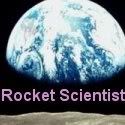RS Classic: Space Shuttle Primer
>> Monday, May 31, 2010
As I recover from my son's near death and try to kick start my creative brain, I'm more and more tempted to post some other classics here. So, I will unless I find I have something new and at least remotely clever to say. Though, if I do, it would probably be best if I put it in the novel currently lying fallow.
Baron Rochester asked me about Shuttle reusability. I gave him a quick answer, but, really, I think his question deserves a more complete answer because the Shuttle is a rather unique vehicle.
As the Apollo program came to an end (and you don’t want to ask me how I feel about that), much of the space focus turned to the highly lucrative but very expensive world of satellites. Up until then (and in fact, continuing on today), most space craft were launched into space using staged expendable rockets. From the beginning, an orbiting space station built with help from the Shuttle was part of the vision, but the US was also very interested in finding a more cost effective method for getting satellites into space and even bringing them back down. Additionally, they hoped to use the Shuttle as an orbiting laboratory for larger scale experiments than ever possible before. It cannot be stressed enough that, with the possible exception of being “cost effective,” the Space Shuttle system has achieved all of these far reaching goals.
The Space Shuttle is a complex system. It includes the reusable Orbiter, the refurbishable Solid Rocket Motors, and the expendable External Tank which supplies the fuel (cryogenic oxygen and hydrogen) for the Orbiter’s main engines. The Orbiter’s main engines are among the most efficient chemical engines ever.
There were a total of seven Orbiters built. The first one, Enterprise, was used for testing but never flew in space (sorry, Roddenberry).The other five were put into use as they were completed: Columbia, Challenger, Discovery, Atlantis and, after Challenger was lost, Endeavour. We are down to three now, Discovery, Atlantis and Endeavour.
Of course, I could talk more about the Orbiter, about their lightweight, but delicate thermal tiles and surfaces, some capable of withstanding nearly 3000 deg F (1650 Deg C), which are engineering marvels all their own, despite their vulnerabilities. But Kathleen asked a good question and I have to get to that.
Even so, I have to mention the two Orbiters we lost, with their full complements. The first, on January 28, 1986, was the Challenger accident when the Shuttle broke up 73 seconds into the launch due to a leak/burnthrough of the Solid Rocket Motor. We lost seven astronauts on that flight: Michael J. Smith, Dick Scobee, Ronald McNair, Ellison Onizuka, Christa McAuliffe (a teacher), Gregory Jarvis, Judith Resnik. I wasn’t here for that. I was a freshman in college and it’s still hard to believe that it happened more than 20 years ago.
Then, there was the loss of STS-107, Columbia, the oldest of our Orbiters during reentry. I was here for that one. In fact, it was my flight (EVA Safety Lead). Columbia was destroyed when damage to her wing leading edge lead to burnthrough and eventual destruction of Columbia on her way in. I knew this crew personally and I still can’t think of it without tears coming to my eyes. Those lost were David Brown, Laurel Clark, Michael Anderson, Ilan Ramon, Rick Husband, Kalpana Chawla, William McCool, another seven.





.jpg)











.jpg)



I really feel NASA learned a ton from those two disasters, I read posts on NASAspaceflight and it seems impossible for anything to go wrong with all the inspections. These problems were mainly caused by human error, not the shuttle it self.
I challenge you to not write something creative after listening to this song
http://www.youtube.com/watch?v=zSgiXGELjbc
Great info, stuff i never knew.